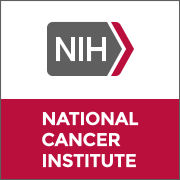预约演示
更新于:2025-05-07
Germinoma
生殖细胞瘤
更新于:2025-05-07
基本信息
别名 Germinoma、Germinoma (morphologic abnormality)、Germinomas + [13] |
简介 A malignant neoplasm of the germinal tissue of the GONADS; MEDIASTINUM; or pineal region. Germinomas are uniform in appearance, consisting of large, round cells with vesicular nuclei and clear or finely granular eosinophilic-staining cytoplasm. (Stedman, 265th ed; from DeVita Jr et al., Cancer: Principles & Practice of Oncology, 3d ed, pp1642-3) |
关联
22
项与 生殖细胞瘤 相关的药物靶点 |
作用机制 CTLA4抑制剂 |
在研机构 |
原研机构 |
最高研发阶段批准上市 |
首次获批国家/地区 美国 |
首次获批日期2022-10-21 |
靶点 |
作用机制 PDL1抑制剂 |
在研机构 |
最高研发阶段批准上市 |
首次获批国家/地区 美国 |
首次获批日期2017-05-01 |
靶点 |
作用机制 PD-1抑制剂 |
在研适应症 |
最高研发阶段批准上市 |
首次获批国家/地区 日本 |
首次获批日期2014-07-04 |
90
项与 生殖细胞瘤 相关的临床试验NCT06932458
A Phase II Single-arm Clinical Trial of Primary Retroperitoneal Lymph Node Dissection in Patients With Testicular Seminoma With Limited Retroperitoneal Metastases
Testicular cancer represents 1% of adult neoplasms and is the most common solid malignancy in young men. At diagnosis, approximately 90% of cases are germ cell tumours (GCT), categorised as either seminoma (55-60%) or non-seminoma types (40-45%).
For many years, the management of patients with CS IIA/B seminoma and retroperitoneal lymph node involvement ≤ 3 cm are eligible for treatment with either radiotherapy or chemotherapy Despite high cure rates for CS II seminoma (approximately 90%) with chemotherapy or radiotherapy, concerns persist regarding short and long-term treatment-related toxicities (such as increased risks of cardiovascular disease and secondary malignancies As such, an alternative strategy which has been explored in this study is the role of RPLND for the management of these patients
For many years, the management of patients with CS IIA/B seminoma and retroperitoneal lymph node involvement ≤ 3 cm are eligible for treatment with either radiotherapy or chemotherapy Despite high cure rates for CS II seminoma (approximately 90%) with chemotherapy or radiotherapy, concerns persist regarding short and long-term treatment-related toxicities (such as increased risks of cardiovascular disease and secondary malignancies As such, an alternative strategy which has been explored in this study is the role of RPLND for the management of these patients
开始日期2025-06-01 |
NCT06937866
Maintenance Zanzalintinib With Oral Etoposide Following High-dose Chemotherapy in Patients With Relapsed Metastatic Germ-cell Tumor
This is an open label, single arm phase I/II trial of maintenance zanzalintinib in combination with oral etoposide in patients with relapsed GCT treated with HDCT and PBSCT with a safety lead-in cohort in patients with relapsed, refractory metastatic GCT.
开始日期2025-04-01 |
申办/合作机构  Indiana University Indiana University [+1] |
NCT06368817
A Phase II Trial Evaluating Chemotherapy Followed by Response-Based Reduced Radiation Therapy for Patients With Central Nervous System Germinomas
This phase II trial studies how well lower dose radiotherapy after chemotherapy (Carboplatin & Etoposide) works in treating children with central nervous system (CNS) germinomas. Radiation therapy uses high energy x-rays, particles, or radioactive seeds to kill cancer cells and shrink tumors. Carboplatin is in a class of medications known as platinum-containing compounds. It works in a way similar to the anticancer drug cisplatin, but may be better tolerated than cisplatin. Carboplatin works by killing, stopping or slowing the growth of tumor cells. Etoposide is in a class of medications known as podophyllotoxin derivatives. It blocks a certain enzyme needed for cell division and DNA repair and may kill cancer cells. Researchers want to see if lowering the dose of standard radiotherapy (RT) after chemotherapy can help get rid of CNS germinomas with fewer long-term side effects.
开始日期2024-10-22 |
100 项与 生殖细胞瘤 相关的临床结果
登录后查看更多信息
100 项与 生殖细胞瘤 相关的转化医学
登录后查看更多信息
0 项与 生殖细胞瘤 相关的专利(医药)
登录后查看更多信息
11,358
项与 生殖细胞瘤 相关的文献(医药)2025-12-31·NMC Case Report Journal
A Primary Spinal Intramedullary Mixed Germ Cell Tumor: A Case Report and Literature Review
Article
作者: TOMOMASA, Ran ; NAKATA, Satoshi ; HONDA, Fumiaki ; HIRATO, Junko ; SHIMAUCHI-OHTAKI, Hiroya ; HORIGUCHI, Keishi ; GOTO, Yuta ; OYA, Soichi ; NAKAMURA, Shunsuke ; YOKOO, Hideaki
2025-12-01·Child's Nervous System
Intracranial lobar germinoma presenting with refractory hypernatremia
Article
作者: Sipani, Mahak ; Arivazhagan, A ; Birua, Gyani Jail Singh ; Rao, Shilpa ; Shashidhar, Abhinith ; Saini, Jitender
2025-06-01·Theriogenology
Immunohistochemical expression of testin protein in testicular tumours in dogs
Article
作者: Brambilla, Eleonora ; Piotrowska, Aleksandra ; Grieco, Valeria ; Tomaszek, Alicja ; Kandefer-Gola, Małgorzata ; Ciaputa, Rafał ; Dzimira, Stanisław ; Janus-Ziółkowska, Izabela ; Nowak, Marcin
17
项与 生殖细胞瘤 相关的新闻(医药)2025-04-20
点击蓝字 关注我们2025年4月11~13日,羊城四月珠江潮涌,大医至善第四届中外卵巢癌学术大会如期在广州召开。本届会议吸引了美、英、加拿大等国际专家及香港地区在内的三百余位中国学者共聚一堂,围绕卵巢癌诊疗难点、痛点及新进展进行深度思想碰撞。值此盛会之际,《肿瘤瞭望》特邀北京大学深圳医院李长忠教授接受专访,分享卵巢恶性生殖细胞肿瘤(MOGCT)临床诊疗现状及未来展望。现整理访谈精要,以飨读者。李长忠 教授北京大学深圳医院主任医师,医学博士,二级教授,博士研究生导师,北京大学深圳医院妇产中心主任。深圳市地方级领军人才,济南市专业技术拔尖人才,山东省有突出贡献的中青年专家中国抗癌协会生育力保护分会主任委员,中华预防医学会生育力保护分会副主任委员,中国医师协会微无创分会委员,中国抗癌协会宫颈癌分会常委,全国卫生产业企业管理协会妇科智能诊疗分会第一届理事会副会长,广东省卫生经济学会妇产科分会副会长,深圳市医学会妇产科分会候任主委,深圳市妇科质控中心主任,深圳市医师学会妇产科分会副会长。美国Mayo Clinic、Johns Hopkins医院、M.D.Anderson癌症中心高级访问学者。《肿瘤瞭望》:首先能否请您简单介绍一下卵巢恶性生殖细胞肿瘤(MOGCT)的定义、分型等基本情况?李长忠教授:卵巢恶性生殖细胞肿瘤(MOGCT)仅占所有卵巢恶性肿瘤的1%~5%,主要包括未成熟畸胎瘤(IT)、卵黄囊瘤(YST)、无性细胞瘤(DG)、胚胎癌(EC)等。其主要特点首先其好发于幼童和40岁以下年轻女性,起病通常为早期,多累及一侧附件,较少双侧肿瘤,除DG多累及双侧附件外,其余瘤种多累及单侧。同时多以盆腔包块形式存在,起病初期往往没有任何感觉,很多年轻女性缺乏定期体检的习惯,往往出现腹痛后才去就诊。其次,MOGCT属于恶性生殖细胞肿瘤,个别可导致免疫性脑炎,研究发现部分含神经组织的卵巢畸胎瘤(OT)在一定条件下能刺激机体产生抗N-甲基-D-天冬氨酸(NMDA)受体抗体,通过与正常神经元上NMDA受体相结合,可诱发脑炎并产生一系列神经精神症状。第三,MOGCT可发生远处转移,不仅影响生育能力,严重可危及生命,需引起高度重视。《肿瘤瞭望》:能否请您谈一谈目前临床上MOGCT的治疗手段有哪些?李长忠教授:目前对于MOGCT的治疗主要还是以手术为主,化疗为辅。手术主要分为三种情况,第一种为保留生育功能手术,适用于年轻有生育需求的女性,在病期较早,最好病灶仅局限于单侧或双侧卵巢,无其他部位转移同时腹水中没有肿瘤细胞的情况下,可以考虑单侧或双侧肿瘤剥除,同时检查有无淋巴结转移。可通过活检排除其他部位转移,进而可考虑保留子宫及单侧/双侧卵巢、输卵管,给患者实现生育的可能。第二种对于没有生育需求的早期恶性未成熟生殖细胞肿瘤,一般情况下考虑进行子宫及双附件切除术,随后病理活检如为ⅠA期DG或高分化的IT,建议切除淋巴结排除转移的可能性,如未发生转移的患者可不接受化疗。一般临床实践中,对于25岁以下患者可不切除淋巴结,25岁以上的患者则需切除淋巴结。第三种对于晚期和复发的恶性生殖细胞肿瘤,手术原则是务求将病灶切除干净,包括转移病灶。如病灶切除干净,患者预后还是比较好的。当然也存在个别患者病期较晚期接受手术治疗的情况,对此类患者无法直接进行手术治疗,可以先进行2~3次甚至4~5次新辅助化疗控制病灶后,进行根治性切除术。除手术治疗外,化疗亦是MOGCT重要治疗手段。对于ⅠA期DG或高分化的IT患者可以不接受化疗,其余病种均需接受化疗,根据疾病复杂程度化疗周期存在差异。对于IT、YST、DG等瘤种患者接受化疗后疗效较好。常用方案为顺铂+依托泊苷+博来霉素(BEP)方案,疗效好的同时,药物副反应更低更可控。对于有生育需求得早期患者,也可以先进行3次左右化疗后随访观察。《肿瘤瞭望》:在妇科肿瘤的综合治疗过程中,年轻女性患者甚至女童在很大程度上会面临丧失生育力的问题。请您谈一谈目前在保护女性生育力方面有何重要措施?李长忠教授:这是个很好的问题,对于MOGCT未生育的年轻女性和女童患者,生育力保护是一个非常重要的课题。首先,需提高早诊早治的重视程度。对于未生育的年轻女性,如发现任何不适,应及时就诊进行经腹妇科超声检查。如已经发现MOGCT存在,应尽早接受治疗,以期达到较好的疗效。其次,对于未生育的MOGCT年轻患者,在手术前应注意进行肿瘤标志物检测,特别是怀疑为恶性生殖细胞肿瘤的患者,一定要注意手术病灶清除彻底性及保护性。目前,卵巢恶性肿瘤的标准分期手术包括双侧附件切除术、全子宫切除术、可疑转移灶的切除活检、腹膜活检、大网膜切除术、腹腔冲洗、盆腔以及腹主动脉旁淋巴结切除术。对于未生育的年轻患者,手术彻底性主要体现在在保证子宫及对侧卵巢的情况下,通过腹膜活检、大网膜切除术、腹腔冲洗等尽可能切除病灶,以便可以完整评估患者病情,为以后的生育提供一个很好的可能性。第三,如患者为ⅠB期,累及双侧卵巢,在这种情况下也可以谨慎剥除囊肿,保留一侧或双侧卵巢,保留生育可能。如患者为Ⅱ期或Ⅲ期,往往存在大网膜或淋巴结转移,但多数情况未累及子宫,在此情况下,尽管需切除双侧卵巢、大网膜、淋巴结等,但可保留子宫,同时可冻存卵巢中留存的部分正常的未成熟卵细胞,后续可通过体外培养等技术实现生育的可能。最后,前面已提到MOGCT中除ⅠA期中分化(G2)和低分化(G3)DG、ⅠA期YST或ⅠB期IT等患者可以密切随访不接受化疗外,其余大多病种均需接受化疗。对于接受化疗的患者,在方案选择时,可选取对卵巢功能及生育能力影响较小的BEP方案,对未来生育能力的保障较好。总之,对于未生育患者,应尽最大努力保留子宫及部分卵巢,如无法保留卵巢的情况下,也可通过冻存卵细胞,借助体外生殖辅助技术实现生育的可能。此外,尽可能避免接受化疗或选择对子宫及卵巢功能影响较小的化疗方案,尽可能保留其生育能力。《肿瘤瞭望》:随着精准医学时代的到来,您认为未来MOGCT的诊疗还有哪些值得探索的方向?李长忠教授:对于MOGCT的治疗,目前手术切除疗效较好,复发率较低,加之其对化疗敏感性较高,所以传统治疗手段层面突破性进展较少。但是对于晚期复发或化疗耐药的患者,近年相关研究表明,免疫检查点抑制剂(ICIs)、靶向治疗、抗血管生成药物等对此类患者具有一定的临床疗效,亟待更深入研究探索。其次,进展较多的是在生育力保护层面,就像前面所提及的,对于无法保留卵巢的女性,可通过冻存卵细胞,借助体外生殖辅助技术实现生育的可能,这种体外辅助生殖技术的发展极大减少了此类患者不能生育的困境。第三,对于晚期复发或化疗耐药的患者,是否可通过放疗及中医中药等手段实现一定的临床获益,目前仍在进一步探索中。(来源:《肿瘤瞭望》编辑部)声 明凡署名原创的文章版权属《肿瘤瞭望》所有,欢迎分享、转载。本文仅供医疗卫生专业人士了解最新医药资讯参考使用,不代表本平台观点。该等信息不能以任何方式取代专业的医疗指导,也不应被视为诊疗建议,如果该信息被用于资讯以外的目的,本站及作者不承担相关责任。
2025-04-03
2025年3月21日至24日,第40届欧洲泌尿外科学会年会(EAU25)在马德里圆满举行。本次大会吸引了逾11000名参会者,并收录近6000篇摘要,创下历史新高,彰显出泌尿外科快速发展的态势。在大会最后一场压轴的全体会议上,EAU专家对泌尿系统肿瘤、功能性泌尿学、男科学、影像学、小儿泌尿学及结石疾病等多个专科领域,展示了本次大会的亮点和重磅研究进展。本文总结泌尿系统肿瘤的EAU大会重磅研究和最新治疗理念如下。尿路上皮癌:更多新型膀胱腔内治疗涌现,ctDNA液体活检具备临床应用价值荷兰鹿特丹Erasmus MC癌症研究所泌尿外科的Joost Boormans教授,回顾了本次EAU大会尿路上皮癌的亮点。他首先介绍了III期研究BOND-003(C队列)的重要结果[1]。该研究评估了膀胱内溶瘤病毒疗法cretostimogene grenadenorepvec在高危卡介苗(BCG)无反应性非肌层浸润性膀胱癌(NMIBC)伴原位癌(CIS)患者中的疗效。112名患者接受6次诱导治疗及维持治疗后,完全缓解率达到75%,中位缓解持续时间达28个月。一年后疾病进展罕见,显示出该疗法良好的长期控制效果。接着,他介绍了来自西班牙的Ib期RUTIVAC-1研究[2]。该研究将BCG与一种新型非活性结核病疫苗RUTI联合应用,显著增强了BCG诱导的免疫反应,结果显示5年无进展生存(PFS)率达100%。Boormans教授还强调了ctDNA(循环肿瘤DNA)在膀胱癌中的临床意义。在一项涉及95例高级别T1期NMIBC患者的研究中,ctDNA阳性提示预后较差,尽管具体治疗策略尚未完全明确。在肌层浸润性膀胱癌(MIBC)方面,TOMBOLA研究[3]评估了术后ctDNA指导下的免疫治疗。研究发现,术后ctDNA阴性的患者即使未接受辅助治疗,生存率依然较高,而ctDNA阳性的患者预后较差,显示ctDNA可作为辅助免疫治疗的重要决策工具。此外,研究也指出微滴式PCR(droplet PCR)在灵敏度上优于全基因组测序,而后者在特异性方面更具优势。此外,NIAGARA研究[4]显示,度伐利尤单抗联合吉西他滨+顺铂的围手术期方案,其病理完全缓解率为37%,明显优于对照组的27%,尽管免疫相关不良事件更为常见。ORA和 SUNRISE-4研究也证实,化疗+免疫治疗及基于TAR-200的治疗组合,特别适用于不耐受新辅助化疗的患者。Boormans教授总结指出,尿液检测在高危NMIBC患者的随访中已经具备实际临床应用价值,而ctDNA指导的围手术期治疗方案亦显示出良好前景,有望为免疫治疗的精准化提供支持,减少不必要的辅助治疗负担,同时维持患者的生存获益。前列腺癌:更加精准的筛查、诊断和综合治疗模式,是提升前列腺癌管理质量的关键来自瑞典卡罗林斯卡学院丹德里德医院的Tobias Nordström教授就前列腺癌的检测、诊断与治疗进展进行了全面总结。他首先回顾了ERSPC试验[5]的最终结果,证实PSA和PSAD筛查可显著降低死亡率,尽管过度诊断问题仍需重视。PROBASE研究[6]显示,两周后重复进行 PSA 检测,可减少近50%不必要的后续检查,优化了早筛策略。在PROSCREEN研究[7]中,MRI被用于重复筛查,其结果提示首次MRI阴性的男性在后续筛查中仍多为阴性,支持其作为筛查工具的有效性。TRANSLATE 研究比较了局部麻醉下经会阴活检与传统经直肠活检,前者可发现更多临床意义癌症,尽管成本更高,初期生活质量略低。在治疗方面,Nordström教授强调将主动监测策略扩展至某些中危患者的可行性。一项研究显示,Gleason 评分1级与2级癌症患者的三年生存率相似。RAMP研究[8]表明,在寡转移患者中行根治性前列腺切除术较单纯系统治疗更能降低癌症特异性死亡率。此外,STAMPEDE 的一项子研究[9]提示二甲双胍可缓解ADT引发的代谢不良反应,为支持治疗提供简便方案。Nordström教授总结指出,更加智能的筛查、精准的诊断工具和整合治疗模式,是提升前列腺癌管理质量的关键。肾癌:将更加依赖生物标志物、影像技术及手术科技的融合,强调个体化治疗来自西班牙阿尔齐拉大学医院泌尿外科的Maria Carmen Mir Maresm教授汇报了肾癌领域的新进展,聚焦于器官保留治疗、生物标志物研究及手术技术革新。其中,GAGome评分作为一种基于尿液代谢组的生物标志物,用于预测术后高危肾癌患者的早期复发。其阴性预测值超过97%,但因假阳性较多,特异性偏低(约51%),仍需进一步验证[10]。其他潜在标志物包括CHEM-1,可用于识别免疫治疗可能获益者;而关于肿瘤微生物组的初步研究则提示,某些菌群可能参与疾病进展。在术前规划方面,影像组学应用前景广阔。一项经过验证的模型可预测肾周血管脂肪存在情况,从而帮助评估肾切除手术的复杂程度。在手术视频演示中,一个关于机器人肿瘤血栓切除术的展示总结了10项关键血管控制技巧;另一视频则展示AI与3D建模在机器人手术中的协同应用,不过外科医生的数字技能尚需提升。Maria Carmen Mir Maresm教授最后总结指出,未来肾癌治疗将更加依赖生物标志物、影像技术及手术科技的融合,推动个体化治疗和长期预后改善。罕见癌种:生物标志物、精准外科手术与心理支持将共同构筑更优的治疗前景来自比利时鲁汶大学医院泌尿外科的Maarten Albersen 教授在EAU25大会上分享了关于阴茎癌和睾丸癌治疗的重要进展。他首先介绍了大会新增的“颜色编码导航”(color-coded tracks),其中就包含了针对罕见癌症的诊疗路径,体现出学术界对这些疾病关注度的提升。在睾丸癌方面,一项来自米兰的研究显示,microRNA作为生物标志物,在检测小型睾丸肿块时具有100%的敏感性[11]。而Christian Frankhauser的研究进一步证实,microRNA在I期生殖细胞肿瘤的随访中具有较高准确性,有望减少影像检查频率与过度治疗[12]。针对II期精原细胞瘤PRIME和COATRIMS研究[13-14]探索了以原发性腹膜后淋巴结清扫术(RPLND)为治疗手段的可能性。两项研究的复发率分别为30%和11.7%。研究均强调microRNA在发现转移灶、个体化治疗决策中的潜力。阴茎癌方面,研究发现C-Met表达上调与肿瘤进展相关,这为靶向药物(如cabozantinib)的应用提供了基础[15]。捷克的一项研究指出,三级淋巴结构(TLS)水平越高,患者预后越好,提示免疫治疗新策略的可能[16]。Laura Elst牵头的一项多中心研究也支持对低风险患者采用器官保留手术,即使复发,整体生存率依然良好。来自伦敦的最新数据同样支持腺体保留术在治疗表浅浸润性肿瘤时具备肿瘤学安全性,同时改善术后功能结局。讨论也围绕激进手术与保守治疗的平衡,以及淋巴结分期在治疗中的核心地位展开。Albersen教授还特别强调患者倡导的重要性,分享了一项由阴茎癌康复者发起的问卷调查,结果显示有30%的患者曾有自杀念头,凸显出心理社会支持在临床治疗之外的迫切需求。他总结道,在这些罕见泌尿系肿瘤的管理中,生物标志物、精准外科手术与心理支持正在共同构筑更优的治疗前景。2025年EAU大会提供了泌尿外科学未来发展的全景展望。从尿路上皮癌的ctDNA精准治疗策略,到AI与机器人在功能泌尿学和结石管理中的实际应用,再到对男性不育与性功能障碍的深入关注,大会所传递的核心信息聚焦于个体化、科技创新与多学科合作。影像技术的优化、微创治疗的发展以及心理社会支持体系的建设,将继续重塑泌尿外科的诊疗路径。展望2026年伦敦EAU年会,泌尿学领域的变革势头仍在持续,EAU 25的重要总结已为临床实践与科研探索提供了坚实的方向与工具。参考文献上下滑动查看更多内容[1]LB12: Updated clinical & translational results: BOND-003 Cohort C- A phase 3, single-arm study of intravesical cretostimogene grenadenorepvec for high-risk BCG-unresponsive non-muscle invasive bladder cancer with carcinoma in situ.presented by Bivalacqua T at EAU25.[2]TB vaccine before Intravesical BCG boosts Immunity and reduces recurrence in bladder cancer patients by Martinez Rodriguez RH, Buisan O and Servian P, et al is presented at EAU25.[3]A0162: Comparison of ctDNA detection methods for monitoring minimal residual disease in patients with bladder cancer: Insights from the TOMBOLA trial.presented by Nordentoft I at EAU25.[4]GC2: Surgical outcomes and neoadjuvant safety with perioperative durvalumab for muscle-invasive bladder cancer (NIAGARA).presented by Catto J.W.F. at EAU25.[5]A0283: Does baseline PSA density predict prostate cancer specific mortality? 21 years follow-up of the ERSPC Rotterdam.presented by van Harten M.J. at EAU25.[6]A0286: Combined MRI targeted and systematic biopsy in young men (45-54 years) with suspicious PSA in a prostate cancer screening setting – data from the PROBASE trial.presented by Al Monajjed R. at EAU25.[7]A0284: MRI findings in men who were screening positive in the first and the second screening round of the randomized ProScreen prostate cancer screening trial.presented by Rannikko A.S. at EAU25.[8]GC8: Multicentric, Prospective, Randomized Controlled Trial Comparing Best Systemic Therapy (BST) With Radical Prostatectomy or BST Alone in the Management of Men With Pauci-metastatic Prostate Cancer (RAMPP).presented by Falkenbach F. at EAU25.[9]A0466: Efficacy of radical prostatectomy for patients with STAMPEDE very high risk, non-metastatic prostate cancer in comparison to outcome of men treated within the STAMPEDE trial.presented by Mazzucato G. at EAU25.[10]AURORAX-0087A: Urine glycosaminoglycan scores for surveillance of recurrence in clear cell carcinoma – an observational prospective multicentre diagnostic test cohort study by Dabestani S, Azawi N et al is presented at EAU25[11]A0384: Comprehensive analysis of tissue-level microRNA expression provides mechanistic insights into transcriptomic alteration in Testicular Germ Cell Tumors (TCGT)[12]A0382: Implementation of microRNA-371 into the follow-up protocol of men with stage 1 testicular germ cell tumors (microRNA-TARGET) – first results of a prospective multi-institutional cohort study[13]A0931: Concordance of bpMRI and mpMRI in assessment of radiological staging, extra-capsular extension and key prostate cancer involvement sites – an analysis of the PRIME trial[14]A0391: Prospective Prospective COTRIMS (COlogne Trial of Retroperitoneal Lymphadenectomy in Metastatic Seminoma) trial – final results[15]A0257: Preclinical rationale for targeting c-MET in penile cancer[16]A0259: Tertiary lymphatic structures have prognostic value in penile carcinoma(来源:《肿瘤瞭望-泌尿时讯》编辑部)声 明凡署名原创的文章版权属《肿瘤瞭望》所有,欢迎分享、转载。本文仅供医疗卫生专业人士了解最新医药资讯参考使用,不代表本平台观点。该等信息不能以任何方式取代专业的医疗指导,也不应被视为诊疗建议,如果该信息被用于资讯以外的目的,本站及作者不承担相关责任。
临床结果免疫疗法临床3期临床2期疫苗
2025-03-03
·汇聚南药
孙建国
博士,中国药科大学研究员,博士生导师,专业方向为药物代谢动力学,主要从事创新药物体内和体外吸收及代谢特性、药物相互作用、生理药代动力学及中药药代动力学研究。先后赴新西兰奥塔哥大学药学院和美国华盛顿大学药学院作访问学者,2010 年赴新西兰参加科技部组织的“中新科学家交流计划”,2011 年被评为江苏省“333 高层次人才培养工程”第三梯队培养对象并获得政府留学奖学金。担任 J Chromatogr B, Xenobiotica, Phytomedicine, 《药学进展》《中国新药杂志》等杂志审稿人。
先后主持完成了 4 项江苏省自然科学基金,3 项国家自然科学基金,1 项国家重点研发计划,主持多项国家重大科研项目子课题,参加多项国家重大科研项目。近年来发表论文 40 余篇,其中以第一作者或通讯作者发表论文 20 余篇(其中 SCI 论文 18 篇),申请专利 6 项,授权 4 项。曾获 2023 年度第三届全国创新争先团队奖(排名第 5),国家科技进步二等奖(排名第 7),江苏省科技进步一等奖 3 项(排名第 4/6/6)。与企业共同合作获得新药临床批件 5 项,负责完成的药代动力学研究支持企业获得新药证书多项。
细胞周期蛋白依赖性激酶家族的研究进展 PPS
李雪华 1, 2,孙继红 2,孙建国 1*
(1. 中国药科大学药物代谢动力学重点实验室,江苏 南京 210009;2. 南京圣和药业股份有限公司,江苏 南京 210038)
[摘要] 细胞周期蛋白依赖性激酶(cyclin-dependent kinase,CDK)是调控细胞周期的核心分子,其家族的亚型存在于细胞周期的各个阶段。CDK 家族成员根据其发挥功能不同主要分为三大类:细胞周期调节因子、转录调节因子以及功能多样或尚未定义的调节器。由于不同类型肿瘤的发生都与细胞周期调控失调有关,所以 CDK 家族成为了抗肿瘤药物开发的热门靶点。目前已上市的 CDK 靶向抑制剂均为 CDK4/6 抑制剂,而作用于其余 CDK 靶点的药物也在持续跟进中,期待在不久的将来会有更多的药物问世。现阶段也有一些研发机构致力于开发作用于非肿瘤病症的 CDK 抑制剂,但这些药物多处于临床前研发阶段。通过对已发现的 CDK 家族的成员进行总结,希望能为后续 CDK 的研究提供一定的参考价值。
细胞周期是细胞生命活动的基本过程,它控制着细胞从静止期转向生长增殖期的过程。细胞周期包括 4 个时期:G1 期(DNA 合成前期)、S 期(DNA合成期)、G2 期(细胞分裂前期)和 M 期(细胞分裂期)。细胞分裂发生在各种生命过程之中,是最基本的生物活动之一,细胞在分裂的过程中会受到不同蛋白酶的调节,细胞周期蛋白依赖性激酶(cyclin-dependent kinase,CDK)便是其中的一种。CDK 属于丝氨酸/苏氨酸家族,目前共有 20 种不同的 CDK 被发现 [1]。不同的 CDK 通过与其相应的细胞周期蛋白(cyclin)结合从而发挥作用。其作为细胞分裂过程中关键的蛋白激酶,与人类的生活息息相关,目前已成为了各大研究所与医药公司研究的热门靶点。
1
细胞周期蛋白依赖性激酶概述
目前在人体内共有 20 种不同的 CDK 被发现,CDK 家族中绝大多数成员的蛋白质长度低于 500 aa,且发挥主要功能的激酶结构域占整个氨基酸序列的绝大部分,而转录调节剂CDK12、CDK13 与其他成员有较大差别。CDKs 通过与 cyclin 结合后才会发挥相应作用,根据其功能可以分为三大类 [2]:1)细胞周期的调节因子,CDK1、 2、 3、 4 和 6;2)转 录调节剂,CDK7、8、9、12、13 和 19;3) 功能多样或尚未定义的调节器,CDK5、10、11、14、15、16、17、18 和 20。
1.1 细胞周期的调节因子
负责调控细胞周期的 CDKs 主要通过与不同的cyclin 结合进而作用于细胞周期的各个阶段(见图1)。除作用于有丝分裂外,部分 CDKs 也可影响减数分裂的进程。
1.1.1 CDK1 CDK1 是与细胞有丝分裂进展相关的关键因素,能够与不同的 cyclin 结合,结合后其功能足以调节细胞分裂所需的所有步骤,继而影响细胞的增殖,且对细胞凋亡也产生一定影响 [3]。近年来,随着人们对 CDK1 的相关研究增多,CDK1 越来越多的功能已被发现。线粒体动力学、线粒体蛋白内流以及生物能量学中都有 CDK1 的参与 [4]。有研究表明,CDK1 对哺乳动物的卵子成熟有一定影响,可以提高体外受精的成功率,自噬泡的形成过程中也有 CDK1 的参与。CDK1 也参与抗病毒信号通路,CDK1 在病原感染的过程中可能会被病原利用,进而会产生协助病毒复制或免疫逃逸的作用 [5]。
1.1.2 CDK2 CDK2 在体内与 cyclin 结合形成二聚体后,通过发生磷酸化和去磷酸化,促进细胞通过 G1 期进入 S 期。除对细胞增殖的影响外,CDK2 在细胞分化、细胞凋亡以及多种疾病的发生发展中也起到一定作用。有研究报道,CDK2 通过参与磷脂酰肌醇 3-激酶(phosphoinositide 3-kinase,PI3K)/ 蛋白激酶 B(protein kinase B,PKB,又称 AKT)信号通路,促进肿瘤细胞的增殖,而其表达失衡,是导致恶性肿瘤的发生与发展的因素之一。CDK2 参与高等真核生物的 DNA 复制,磷酸化复制前复合物的几个组分,在协调细胞中心体复制周期中发挥重要作用,且其是减数分裂所必需的 CDK [6]。
1.1.3 CDK3 CDK3 是细胞周期调控机制的核心,其在多种人类肿瘤细胞系和肿瘤组织中高表达,但在正常组织和细胞中的活性极低,所以 CDK3 与一些肿瘤的发生和发展密切相关,其表达可能为肿瘤的早期诊断和治疗提供新思路 [7]。截至目前,对CDK3 的研究尚不充分,其生物学功能和调节细胞周期的机制有待于进一步开发。
1.1.4 CDK4 CDK4 是调节细胞周期的核心因子之一,与 Cyclin D 结合后,通过调节 RB 磷酸化,使RB 在 G1后期被其他 CDK 灭活,并从 RB 约束中释放 E2F,促进细胞由 G1期向 S 期推进 [8](见图 2)。研究表明,CDK4 是脂肪细胞胰岛素应答的重要介质,胰岛素激活 Cyclin D1-CDK4 复合物,在赖氨酸乙酰转移酶 2A(lysine acetyltransferase 2A,KAT2A)的作用下使得糖异生基因的表达受到抑制,从而抑制肝中葡萄糖的产生 [9]。除葡萄糖代谢外,CDK4 和 Cyclin D3 还通过腺苷酸活化蛋白激酶 α2(adenosine 5-monophosphate activated protein kinase α2,AMPKα2)亚基的磷酸化对植物组织进行负调节,在厌氧糖酵解和脂肪酸氧化中发挥作用 [10]。CDK4表达也是三阴性乳腺癌的预后指标。
1.1.5 CDK6 CDK6 与 CDK4 是高度同源的细胞周期激酶,通过与 Cyclin D(D1、D2 和 D3)形成复合物,促进细胞在 G1期的进展。同 CDK4 类似,CDK6-Cyclin D 复合物能够使 RB 磷酸化,进而从RB 介导的抑制中释放 E2F [11](见图 2)。CDK6也在造血中起重要作用,其丢失会导致淋巴细胞轻度贫血,胸腺萎缩和 G1进展延迟,在造血干细胞(hematopoietic stem cell,HSC)中,CDK6 的缺失会导致干细胞活化延迟 [12]。有研究表明,Yes相关蛋白(Yes associated protein,YAP)可以改善CDK6 的信号通路,进而预防星形胶质细胞过早衰老和阿尔茨海默病(Alzheimer, s disease,AD)认知能力下降 [13]。
1.2 转录调节剂
调控转录相关的 CDKs 主要通过与相应 Cyclin结合后磷酸化 RNA 聚合酶 Ⅱ(RNA polymerase II,RNA Pol Ⅱ)的 C-端区域(C-terminal domain,CTD)从而调控转录。
1.2.1 CDK7 CDK7 是细胞周期和基因转录的中枢调节因子,是 CDK 激活激酶(cyclin-dependent kinase activating kinase,CAK)复合物的催化核心。虽然有多种 CAK 的存在,但研究表明,CDK7 是哺乳动物最重要的 CAK,在细胞周期中占主导地位 [14]。CDK7 通过在启动子区磷酸化 RNA Pol Ⅱ的 CTD区域的丝氨酸残基,发挥调控转录起始和清除启动子的作用,进而影响转录活性。在肿瘤组织中,CDK7 的表达量要比正常组织的表达量有明显的升高,选择性抑制 CDK7 可以阻滞 G1 期细胞进入 S 期,阻滞 S/G2 期细胞进入有丝分裂过程,同时可以阻止CDK1、CDK2 磷酸化的发生,所以 CDK7 也成为了抗肿瘤药物研发的热门靶点 [15]。
1.2.2 CDK8 CDK8 可以与 Cyclin C、调解复合体亚基 12(mediator complex subunit 12,MED12)和MED13一起形成“CDK8亚模块”,与Mediator结合,形成 CDK8-Mediator 模块,为转录因子、染色质修饰剂、启动子和增强子与 RNA Pol Ⅱ建立了桥梁,并在转录过程中发挥核心作用 [16](见图 3)。CDK8既可以抑制又能激活哺乳动物的基因转录,除了启动转录外,CDK8 还可以调节转录延伸。CDK8 也可以作为致癌因子,通过介导β-连环蛋白(β-catenin)的转录输出,驱动 Wnt(Wingless/Integrated)通路的活性,导致结直肠癌的发生 [17]。CDK8 现已被证实为一种有效的抗肿瘤靶点,与多种癌症的发生、转移、耐药和代谢等密切相关,除此之外,CDK8也是理想的抗炎靶点,通过抑制 CDK8 可以增强激活蛋白-1(activator protein-1,AP-1)的转录活性,上调白细胞介素 -10(interleukin-10,IL-10)的表达 [18]。
1.2.3 CDK9 CDK9 定位于整个核内的活性转录位点,其在转录周期的多个阶段都是调节中枢 [19]。CDK9 的表达对于癌症、炎症以及促进心肌纤维化都有一定影响。如图 4 所示,CDK9 通过被 CDK7磷酸化之后而被激活,CDK9 和 CyclinT1 结合形成正向转录延伸因子(positive transcription elongation factor b,P-TEFb),P-TEFb 通过磷酸化 CTD 的氨基酸残基 Ser2 从而引起转录的延伸 [2]。研究发现,CDK9 除作为癌症治疗靶点外,其抑制剂对心肌肥大也有一定作用 [20]。
1.2.4 CDK12 CDK12 由 1 490 个氨基酸组成,主要发挥功能的是激酶结构域,通过和 Cyclin K 形成异二聚体,发挥激酶作用,其富含精氨酸/丝氨酸的结构域在信使 RNA(messenger RNA,mRNA)剪接中发挥着重要的作用。目前已知 CDK12 有如下功能 [21]:1)磷酸化 RNA Pol Ⅱ的 CTD 区域,促进转录的延伸;2)与 RNA 加工因子作用,调控 RNA剪切过程;3)介导转录的 RNA Pol Ⅱ的磷酸化调控 mRNA 3’端加工;4)调节内含子的多聚腺苷化及转录。CDK12 基因在肿瘤中会发生突变、扩增、缺失和融合,且在胃肠道肿瘤和妇科肿瘤中的改变率最高。CDK12 在多种癌症细胞中高表达,所以CDK12 已成为癌症治疗研究的热门靶点之一。
1.2.5 CDK13 CDK13 由 1 512 个氨基酸组成,通过控制剪接调节因子的磷酸化状态和活性,编码参与基因表达调控 [22]。其激酶结构域和 CDK12 的激酶结构域相似度达 92%,但在此区域外二者结构存在较大差异。与 CDK12 类似,CDK13 也可以和Cyclin K 形成异二聚体,发挥激酶作用,同 CDK12一样可以催化 RNA Pol Ⅱ的 CTD 区域的 Ser2 和Ser5 的磷酸化进而发挥后续功能。研究表明,在以上共同的生化功能外,CDK12 与 CDK13 调节表达的基因簇有所不同。此外,CDK13 还可以调控小核RNA(small nuclear RNA,snRNA)和核仁小分子RNA(small nucleolar RNA,snoRNA)的表达。相关研究表明,CDK13 突变也成为导致先天性心脏缺陷、面部畸形和智力发育障碍的原因之一 [23]。
1.2.6 CDK19 CDK19 是 CDK8 的旁系同源物,与CDK8 有高度同源性,二者的激酶结构域几乎完全相同 [24]。CDK19 可以通过抑制 p53 介导的 p21 转录来调节造血干细胞和急性髓系白血病细胞的增殖,也可以作为头颈部鳞状细胞癌复发性疾病的潜在人乳头瘤病毒(human papilloma virus,HPV)非依赖性生物标志物 [25]。
1.3 功能多样或尚未定义的调节器
CDK 家族成员除作用在细胞周期和转录外,还有部分成员具有较多功能,且通常具有组织特异性,但也有部分成员由于发现较晚,研究不充分,需等待进一步探索与发现。
1.3.1 CDK5 CDK5 在神经系统疾病的病理过程中起重要作用,病理刺激后 CDK5 与 p35 和 p39结合,使得 p35 和 p39 被钙蛋白酶裂解为 p25 和p29 [26],TP53-诱导糖酵解调节磷酸酶(TP53-induced glycolysis and apoptosis regulator,TIGAR)可以上调CDK5 表达进而激活共济失调-毛细血管扩张症突变蛋白(ataxia-telangiectasia mutated protein,ATM),减少 DNA 损伤 [27]。当 CDK5 与 Cyclin I 结合后可以促进 B 淋巴瘤-2(B-cell lymphoma-2,Bcl-2)和Bcl-211 表达,促进细胞生存,但 CDK5 与 Cyclin I、Cyclin D1 以及谷胱甘肽 S-转移酶 P1(glutathione S-transferase P1,GSTP1)结合时会抑制 CDK5 的活性(见图 5)。CDK5 还与多种癌症的发生与发展有关,例如乳腺癌、肺癌、结肠癌、胰腺癌、黑色素瘤、甲状腺癌和脑肿瘤等,有望成为治疗癌症的新靶点 [28]。CDK5 过度激活还会导致多种神经退行性疾病,包括AD、帕金森病、亨廷顿病、脑血管疾病、缺血性卒中、癫痫、脑出血、神经性疼痛和胶质母细胞瘤等 [29]。
1.3.2 CDK10 CDK10 在细胞增殖、转录调节和细胞周期调节中都起着重要的作用,是 ETS 原癌基因 2(ETS proto-oncogene 2,Ets2)转录因子的调节因子,并调节其反式活化活性 [30]。研究表明,CDK10 不仅在乳腺癌中是一种潜在的肿瘤抑制因子,而且在其他肿瘤(如精原细胞瘤)中也是一种潜在的肿瘤抑制因子 [31]。CDK10 表达增加可以诱导 G0/G1 细胞周期停滞并增强 5-氟尿嘧啶(5-Fluorouracil,5-FU)诱导的细胞周期停滞,CDK10 在胆管癌中的表达会下调,而过表达可以逆转胆道癌对化疗的耐药性,降低胆道癌细胞的生存能力 [32]。
1.3.3 CDK11 CDK11 可以与细胞周期蛋白 Cyclin L1和 Cyclin L2 结合并表达 CDK11p110 和 CDK11p58两种蛋白质亚型,CDK11p110 在 RNA Pol Ⅱ定向转录和共转录 mRNA 加工中发挥作用,而 CDK11p58与有丝分裂有关 [33]。CDK11p58 仅在细胞周期的G2/M 期弱表达,相反,CDK11p110 在所有组织和CDK11 中普遍表达。CDK11 也是复制依赖性组蛋白基因转录所必需的蛋白 [34]。
1.3.4 CDK14 CDK14 可以调节细胞周期,细胞增殖等多种途径,是多种人类恶性癌症的癌基因,研究发现,CDK14 与 Cyclin Y 相互作用,激活肝细胞癌中的非典型 Wnt 信号传导,敲低 CDK14 可以抑制胰腺癌的肿瘤细胞增殖、侵袭和上皮到间充质的转化 [35]。CDK14 的异常表达与食管鳞状细胞癌患者的化学耐药性有关,可作为预后标志物。有报道称,CDK14 可以通过以激酶非依赖性方式调节非典型 Wnt 信号通路来促进轴突再生,且 Wnt 信号通路会促进卵巢癌中的细胞增殖、迁移和侵袭 [36]。
1.3.5 CDK15CDK15 是一种高度保守的同源基因,与癌症关系密切。研究表明,CDK15 可以通过诱导存活蛋白 Thr34 的磷酸化来减弱 Trail 诱导的细胞凋亡 [37]。CDK15 在乳腺癌组织中上调,也预示着这些患者的预后不良,所以 CDK15 有望成为治疗乳腺癌的新靶点。
1.3.6 CDK16 CDK16 通过磷酸化胞质分裂的蛋白质调节因子 1(protein regulator of cytokinesis 1,PRC1)的蛋白质调节剂来调节有丝分裂期间纺锤体的形成从而发挥其功能。CDK16 也参与囊泡运输、神经突生长、精子发生、葡萄糖转运、骨骼肌生成等过程 [38]。研究发现,CDK16 在多种癌症中高表达,例如肺癌、乳腺癌等。CDK16 可提高三阴性乳腺癌细胞体外增殖和迁移能力,促进三阴性乳腺癌在体内的肿瘤生长和转移,且可以通过抑制细胞凋亡和活性氧的产生以及以 p53 依赖性方式抑制肺癌细胞中的 DNA 损伤反应来促进放射性耐药 [39]。
1.3.7 CDK17 CDK17 又称为 PCTAIR2,因其研究较少,所以在细胞周期和表达中尚不清楚。有研究表明,CDK17 的表达可能与 AD 存在一定联系 [40]。
1.3.8 CDK18 CDK18 又称 PCTAIR3,通过促进复制应激信号传导和基因组稳定性,其最初被定义为一种神经元激酶,当在人脑中过度表达时,会磷酸化 tau 蛋白,而过度磷酸化的 tau 可以形成与 AD 病理相关的神经原纤维缠结的一部分,故 CDK18 的过表达与 AD 的发生也存在一定联系 [41]。除 AD 外,CDK18 功能障碍也会导致其他疾病,如代谢性疾病、脑缺血、抑郁症、癌症和神经系统疾病等 [42]。
1.3.9 CDK20 CDK20 与 CDK7 序列同源,可以激活 CDK2 并控制各种癌细胞的细胞周期进程 [43],其在多种类型的人类癌症中起着重要的作用,包括胶质母细胞瘤、肝癌、卵巢癌和结直肠癌。也有研究发现,其在自我强化回路中发挥作用,调节乙型肝炎病毒相关的肝癌发生,也会导致 Eeste 基因增强子人类同源物2(enhancer of zeste homolog2,EZH2)上调[44]。
2
细胞周期蛋白依赖性激酶抑制剂的研究概述
自 20 世纪 90 年代起,便开始对 CDK 抑制剂进行研究,但第 1 代泛 CDK 抑制剂如 flavopiridol和 roscovitine,由于其选择性大且毒性较高,对正常细胞的影响较大,故开启了对精准靶向 CDK 家族亚型靶点的研究。根据 CDK 家族不同的亚型所发挥的不同的功能,研究发现,CDK 抑制剂在糖尿病、肾病、神经退行性疾病、传染性疾病以及癌症的治疗中都有很大的潜力 [45-47]。由于癌症的治疗一直以来都是人们想要突破的一大难题,而不同类型肿瘤的发生都与细胞周期调控失调有关,所以对于该家族靶向药物的研究多集中于癌症的治疗,但也有部分机构对于该靶点在其他治疗领域进行研究,例如神经退行性疾病、AD、男性避孕药等,但以非肿瘤作为适应证的药物现阶段进展较慢,多处于临床前研究阶段,但临床前的研究成果也足以证明该家族的抑制剂除抑制肿瘤外也可适用于其他适应证。截至 2023 年底,通过美国食品药品监督管理局(Food and Drug Administration,FDA)上市的CDK 靶向制剂只有以 CDK4/6 为靶点的药物(见表1),其他靶点药物进展较慢,多数集中于临床前研发阶段,且多数专利已披露药物在临床前因为药效或安全性问题止步于临床前基础研究。
2015年,辉瑞研发的哌柏西利(palbociclib,1)获批,是首个应用于临床的 CDK4/6 抑制剂,两年后,诺华与礼来所推出的“me-too”药利柏西利(ribociclib,2)和阿贝西利(abemaciclib,3)先后上市。诺华的 ribociclib 的分子结构与辉瑞的palbociclib 多有类似,主要是与嘧啶环连接的环有所不同;礼来的 abemaciclib 较 palbociclib 改动较大,但关键结合特征并未改变,临床试验表明,Abemaciclib 较 palbociclib 在耐药性、有效性方面具有一定 优 势,Abemaciclib 展 现 出“best-in-class”的潜质 [48]。2021 年,G1 治疗公司与勃林格殷格翰制药和先声药业联合研发的曲拉西利(trilaciclib,4)问世,Trilaciclib 从分子结构上参照了诺华的ribociclib,主要是将 ribociclib 的酰胺取代环化,与原先的母核形成三并环,同时将原环戊烷取代变换为环己烷螺环,通过一个螺环突破了专利,且适应证避开了乳腺癌,转为化疗引起的骨髓抑制 [49]。2021 年 底, 首 个 由 我 国 恒 瑞 医 药 自 主 研发 的CDK4/6 抑制剂达尔西利(dalpiciclib,5)问世,其分子结构主要在 palbociclib 的基础上进行改动,其通过与氟维司群联用,用于治疗适用于既往接受内分泌治疗后出现疾病进展的激素受体阳性(hormone receptor positive,HR+ )、 人表皮生长因子受体-2 阴性(human epidermal growth factor receptor 2 negative,HER2- )的复发或转移性乳腺癌患者,且该药已于 2023 年被纳入新版国家医保药品目录。
3
结语与展望
作为细胞生命活动的基本过程,细胞周期控制着细胞从静止期转向生长增殖期的过程。CDK 和cyclin 是调控整个细胞周期的核心分子。CDK 通过和相应的cyclin结合后作用在细胞周期的各个阶段,影响细胞周期进程,调控细胞增殖。不同类型的癌症的发生与发展的过程中有一共同特征就是细胞周期调控失调,细胞增殖异常,所以通过影响癌症细胞周期来发挥抗肿瘤作用是抗肿瘤药物的研发的热点之一,CDK 家族已成为抗肿瘤药物研发的热门靶点,具有可预见的发展前景。介于泛 CDK 抑制剂在安全性上存在较大问题,故以 CDK 家族中不同亚型作为靶点精确靶向成为 CDK 家族靶向抑制剂的研发热点。
抗肿瘤细胞周期药物治疗目前已知的机制包括以下 4 个方面:1)阻滞细胞周期从 G1 期进入 S 期;2)调节转录水平;3)激活抗肿瘤免疫;4)控制细胞代谢功能。CDK 家族庞大,在目前已经发现的在人体内的 20 种亚型中,CDK1、2、3、4 和 6 作用于细胞周期的各个阶段;CDK7、8、9、12、13和 19 可以调控转录水平,从而抑制肿瘤细胞增殖;CDK8 可以上调 IL-10 的的表达作用于免疫;多种亚型对细胞代谢有一定影响。CDK 家族不同的亚型在抗肿瘤细胞周期药物的4种机制中均有一定参与。
目前已上市的 CDK 家族靶向抑制剂均集中在CDK4/6 中,但也有不少靶向 CDK 家族的其他成员的药物已进入Ⅱ、Ⅲ期临床试验,且这些药物的适应证均集中在抗肿瘤方向,证明了 CDK 家族中多种亚型可成药的无限可能,也预示着不久的将来会有更多的 CDK 靶向抑制剂上市,为肿瘤患者带来福音。大部分靶向 CDK 家族的非抗肿瘤药均停留在临床前研究阶段,可能与研究较少有关,靶向CDK 家族作用于非肿瘤疾病的可成药性需要更加深入的研究。
通过对人体中已发现的 CDK 家族中各亚型的特点以及作用进行简单概述,且汇总了 2024 年前已上市的 CDK 家族靶向药物,希望对后续 CDK 家族的研究以及 CDK 家族靶向药物的研发提供参考。期待在不久的将来会有更多的药物上市,为患者带来福音。
[ 参考文献 ]
[1] Malumbres M, Harlow E, Hunt T, et al. Cyclin-dependent kinases: a family portrait[J]. Nat Cell Biol, 2009, 11(11): 1275-1276.
[2] Mandal R, Becker S, Strebhardt K. Targeting CDK9 for anti-cancer therapeutics[J/OL]. Cancers (Basel), 2021, 13(9): 2181[2024-05-11]. https://doi.org/10.3390/cancers13092181.
[3] Santamaría D, Barrière C, Cerqueira A, et al. CDK1 is sufficient to drive the mammalian cell cycle[J]. Nature, 2007, 448(7155): 811-815.
[4] Xie B, Wang S Y, Jiang N, et al. Cyclin B1/CDK1-regulated mitochondrial bioenergetics in cell cycle progression and tumor resistance[J/OL]. Cancer Lett, 2019, 443: 56-66[2024-05-11]. https://doi. org/10.1016/j.canlet.2018.11.019.
[5] Li Q Y, Zhou D Y, Jia F, et al. Japanese encephalitis virus NS1’ protein interacts with host CDK1 protein to regulate antiviral response[J/OL]. Microbiol Spectr, 2021, 9(3): e0166121[2024-05-11]. https://doi. org/10.1128/Spectrum.01661-21.
[6] Tadesse S, Caldon EC, Tilley W, et al. Cyclin-dependent kinase 2 inhibitors in cancer therapy: an update[J]. J Med Chem, 2019, 62(9): 4233-4251.
[7] Keezer S M, Gilbert D M. Evidence for a pre-restriction point CDK3 activity[J]. J Cell Biochem, 2002, 85(3): 545-552.
[8] Shapiro G I. Cyclin-dependent kinase pathways as targets for cancer treatment[J]. J Clin Oncol, 2006, 24(11): 1770-1783.
[9] Lee Y, Dominy J E, Choi Y J, et al. Cyclin D1-CDK4 controls glucose metabolism independently of cell cycle progression[J]. Nature, 2014, 510(7506): 547-551.
[10] Lopez-Mejia I C, Lagarrigue S, Giralt A, et al. CDK4 phosphorylates AMPKα2 to inhibit its activity and repress fatty acid oxidation[J]. Mol Cell, 2017, 68(2): 336-349.
[11] Huang Z L, Li X, Tang B, et al. SETDB1 modulates degradation of phosphorylated RB and anticancer efficacy of CDK4/6 inhibitors[J]. Cancer Res, 2023, 83(6): 875-889.
[12] Laurenti E, Frelin C, Xie S, et al. CDK6 levels regulate quiescence exit in human hematopoietic stem cells[J]. Cell Stem Cell, 2015, 16(3): 302-313.
[13] Xu X X, Shen X Y, Wang J J, et al. YAP prevents premature senescence of astrocytes and cognitive decline of Alzheimer's disease through regulating CDK6 signaling[J/OL]. Aging Cell, 2021, 20(9): e13465[2024-05-11]. https://doi.org/10.1111/acel.13465.
[14] Ganuza M, Sáiz-Ladera C, Cañamero M, et al. Genetic inactivation of CDK7 leads to cell cycle arrest and induces premature aging due to adult stem cell exhaustion[J]. EMBO J, 2012, 31(11): 2498-2510.
[15] Larochelle S, Merrick K A, Terret M E, et al. Requirements for CDK7 in the assembly of CDK1/cyclin B and activation of CDK2 revealed by chemical genetics in human cells[J]. Mol cell, 2007, 25(6): 839-850.
[16] Menzl I, Witalisz-Siepracka A, Sexl V. CDK8-novel therapeutic opportunities[J/OL]. Pharmaceuticals, 2019, 12(2): 92[2024-05-11]. https://doi.org/10.3390/ph12020092.
[17] Baert F, Noman M, Vermeire S, et al. Influence of immunogenicity on the long-term efficacy of infliximab in Crohn's disease[J]. N Engl J Med, 2003, 348(7): 601-608.
[18] Chen X, Yan Y Y, Cheng X, et al. A novel CDK8 inhibitor with poly substituted pyridine core: discovery and anti-inflammatory activity evaluation in vivo[J/OL]. Bioorg Chem, 2023, 133: 106402[2024-05-11]. https://doi.org/10.1016/j.bioorg.2023.106402.
[19] Ghamari A, Corput M P C, Thongjuea S, et al. In vivo live imaging of RNA polymerase II transcription factories in primary cells[J]. Genes Dev, 2013, 27(7): 767-777.
[20] 廖双华 , 郑文武 , 李丹,等 . CDK9 及其抑制剂在心肌肥大中的作用机制研究 [J]. 医学综述, 2018, 24(3): 471-475.
[21] Lui G Y L, Grandori C, Kemp C J. CDK12: an emerging therapeutic target for cancer[J]. J Clin Pathol, 2018, 71(11): 957-962.
[22] Liang K, Gao X, Gilmore, et al. Characterization of human cyclin dependent kinase 12 (CDK12) and CDK13 complexes in C-terminal domain phosphorylation, gene transcription, and RNA processing[J]. Mol Cell Biol, 2015, 35(6): 928-938.
[23] Sifrim A, Hitz M P, Wilsdon A, et al. Distinct genetic architectures for syndromic and nonsyndromic congenital heart defects identified by exome sequencing[J]. Nat Genet, 2016, 48(9): 1060-1065.
[24] Daniels D L, Ford M, Schwinn M K, et al. Mutual exclusivity of MED12/MED12L, MED13/13L, and CDK8/19 paralogs revealed within the CDK-mediator kinase module[J]. J Proteomics Bioinform, 2013, 2(2): 2-7.
[25] Paulsen F O, Idel C, Ribbat-Idel J, et al. CDK19 as a potential HPV independent biomarker for recurrent disease in HNSCC[J/OL]. Int J Mol Sci, 2020, 21(15): 5508[2024-05-11]. https://doi.org/10.3390/ ijms21155508.
[26] Asada A, Saito T, Hisanaga S. Phosphorylation of p35 and p39 by CDK5 determines the subcellular location of the holokinase in a phosphorylation-site-specific manner[J]. J Cell Sci, 2012, 125(14): 3421- 3429.
[27] Yu H P, Xie J M, Li B, et al. TIGAR regulates DNA damage and repair through pentosephosphate pathway and CDK5-ATM pathway[J/OL]. Sci Rep, 2015, 5: 9853[2024-05-11]. https://doi.org/10.1038/srep09853.
[28] Pozo K, Bibb J A. The emerging role of CDK5 in cancer[J]. Trends Cancer, 2016, 2(10): 606-618.
[29] Cheung Z H, Lp N Y. CDK5: a multifaceted kinase in neurodegenerative diseases[J]. Trends Cell Biol, 2012, 22(3): 169-175.
[30] Kasten M, Giordano A. CDK10, a Cdc2-related kinase, associates with the Ets2 transcription factor and modulates its transactivation activity[J]. Oncogene, 2001, 20(15): 1832-1838.
[31] Leman E S, Magheli A, Yong K M A, et al. Identification of nuclear structural protein alterations associated with seminomas[J]. J Cell Biochem, 2009, 108(6): 1274-1279.
[32] Yu J H, Zhong X Y, Zhang W G, et al. CDK10 functions as a tumor suppressor gene and regulates survivability of biliary tract cancer cells[J]. Oncol Rep, 2012, 27(4): 1266-1276.
[33] Hluchý M, Gajdušková P, Ruiz M I, et al. CDK11 regulates pre-mRNA splicing by phosphorylation of SF3B1[J]. Nature, 2022, 609(7928): 829- 834.
[34] Ou D, Chen L, He J, et al. CDK11 negatively regulates Wnt/β-catenin signaling in the endosomal compartment by affecting microtubule stability[J]. Cancer Biol Med, 2020, 17(2): 328-342.
[35] Sun T T, Co N N, Wong N. PFTK1 interacts with cyclin Y to activate non-canonical Wnt signaling in hepatocellular carcinoma[J]. Biochem Biophys Res Commun, 2014, 449(1): 163-168.
[36] Ou-Yang J, Huang L H, Sun X X. Cyclin-dependent kinase 14 promotes cell proliferation, migration and invasion in ovarian cancer by inhibiting Wnt signaling pathway[J]. Gynecol Obstet Inves, 2017, 82(3): 230-239.
[37] Park M H, Kim S Y, Kim Y J, et al. ALS2CR7 (CDK15) attenuates TRAIL induced apoptosis by inducing phosphorylation of survivin Thr34[J]. Biochem Biophys Res Commun, 2014, 450(1): 129-134.
[38] Shimizu K, Uematsu A, Imai Y, et al. Pctaire1/CDK16 promotes skeletal myogenesis by inducing myoblast migration and fusion[J]. FEBS Lett, 2014, 588(17): 3030-3037.
[39] Xie J, Li Y, Jiang K, et al. CDK16 phosphorylates and degrades p53 to promote radioresistance and predicts prognosis in lung cancer[J]. Theranostics, 2018, 8(3): 650-662.
[40] Chaput D, Kirouac L, Stevens S M, et al. Potential role of PCTAIRE-2, PCTAIRE-3 and P-histone H4 in amyloid precursor protein-dependent Alzheimer pathology[J]. Oncotarget, 2016, 7(8): 8481-8497.
[41] Herskovits A Z, Davies P. The regulation of tau phosphorylation by PCTAIRE 3: implications for the pathogenesis of Alzheimer's disease[J]. Neurobiol Dis, 2006, 23(2): 398-408.
[42] Pepino R D O, Coelho F, Janku T A B, et al. Overview of PCTK3/ CDK18: a cyclin-dependent kinase involved in specific functions in post mitotic cells[J]. Curr Med Chem, 2021, 28(33): 6846-6865.
[43] Liu Y, Wu C W, Galaktionov K. P42, a novel cyclin-dependent kinase activating kinase in mammalian cells[J]. J Biol Chem, 2004, 279(6): 4507-4514.
[44] Feng H, Yu Z, Tian Y, et al. A CCRK-EZH2 epigenetic circuitry drives hepatocarcinogenesis and associates with tumor recurrence and poor survival of patients[J]. J hepatol, 2015, 62(5): 1100-1111.
[45] Liu W, Zhou Y, Liang R, et al. Inhibition of cyclin-dependent kinase 5 activity alleviates diabetes-related cognitive deficits[J]. FASEB J, 2019, 33(12): 14506-14515.
[46] Malhotra N, Gupta R, Kumar P. Pharmacological relevance of CDK inhibitors in Alzheimer's disease[J/OL]. Neurochem Int, 2021, 148: 105115[2024-05-11]. https://doi.org/10.1016/j.neuint.2021.105115.
[47] Ibraghimov B O. Targeting dysregulated cell cycle and apoptosis for polycystic kidney disease therapy[J]. Cell Cycle, 2007, 6(7): 776-779.
[48] Braal C L, Jongbloed E M, Wilting S M, et al. Inhibiting CDK4/6 in breast cancer with palbociclib, ribociclib, and abemaciclib: similarities and differences[J/OL]. Drugs, 2021, 81(3): 317-331.
[49] Jhaveri K, Burris H A, Yap T A, et al. The evolution of cyclin dependent kinase inhibitors in the treatment of cancer[J]. Expert Rev Anticancer Ther, 2021, 21(10): 1105-1124
喜欢我们文章的朋友点个“在看”和“赞”吧,不然微信推送规则改变,有可能每天都会错过我们哦~
免责声明
“汇聚南药”公众号所转载文章来源于其他公众号平台,主要目的在于分享行业相关知识,传递当前最新资讯。图片、文章版权均属于原作者所有,如有侵权,请在留言栏及时告知,我们会在24小时内删除相关信息。
信息来源:原创 药学进展
往期推荐
本平台不对转载文章的观点负责,文章所包含内容的准确性、可靠性或完整性提供任何明示暗示的保证。
分析
对领域进行一次全面的分析。
登录
或

生物医药百科问答
全新生物医药AI Agent 覆盖科研全链路,让突破性发现快人一步
立即开始免费试用!
智慧芽新药情报库是智慧芽专为生命科学人士构建的基于AI的创新药情报平台,助您全方位提升您的研发与决策效率。
立即开始数据试用!
智慧芽新药库数据也通过智慧芽数据服务平台,以API或者数据包形式对外开放,助您更加充分利用智慧芽新药情报信息。
生物序列数据库
生物药研发创新
免费使用
化学结构数据库
小分子化药研发创新
免费使用




